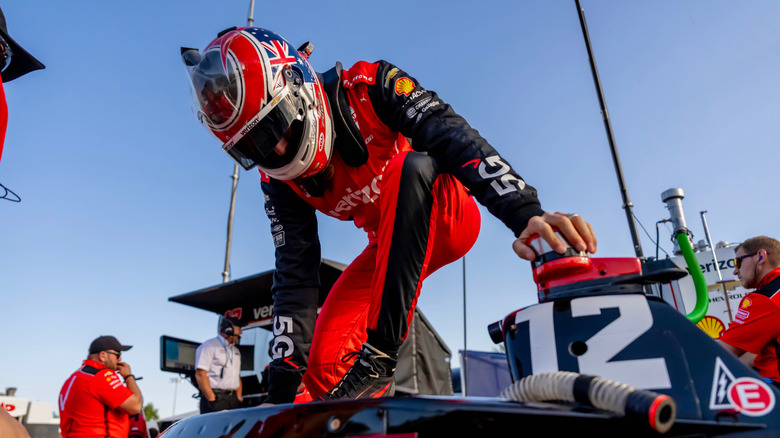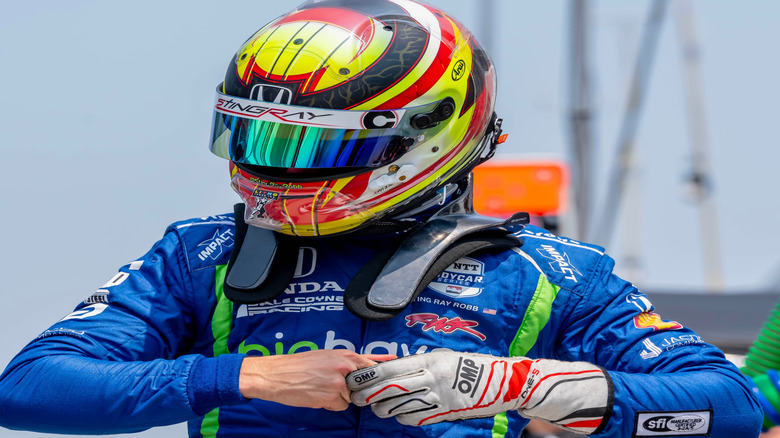What Are The Tubes On IndyCar Helmets For?
Race car helmets serve one very obvious use, and that's to protect your head in the event of an accident. There are various different types, with historic racing helmets tending to favor open-face, period-correct styles, while modern racing helmets typically are closed, with a visor. There are little details that also differentiate helmets from one racing series to another, such as the cool features on MotoGP helmets. However, one of the more unusual race-specific features is the tube that adorns the top of IndyCar helmets.
There is nothing too high-tech about it; it's literally just a tube on top of the helmet, but the function it serves is pretty critical. It's there to aid cooling, and while getting hot in a racing car is nothing new, there are specific heating and cooling issues when it comes to piloting an IndyCar. An IndyCar's aeroscreen blocks cool air from flowing over the driver's head, which in turn leads to some pretty uncomfortable cockpit temperatures — up to 140°F. The helmet tube counters this by receiving cooler air via a scoop mounted on the car's body. This air is then channeled via the scoop and tube into the driver's helmet, providing a simple yet effective resolution to the high temperatures within an IndyCar's cockpit.
Other details on IndyCar and modern race helmets
IndyCar driver Conor Daly is a man intimately familiar with the idiosyncrasies of helmets from the sport, and he talked about some of the more interesting details of them in a recent YouTube video. This includes a comparison of Carlos Sainz Jr's F1 helmet, which features an aerodynamic feature at the base, covering the chin. This chin spoiler, which also features on Daly's Indy 500 helmet, is designed so that air entering the cockpit forces the head to stay stable and pointing downwards. Without the aerodynamic feature, Daly reveals that the head could lift due to air pressure, which is the last thing anyone would want when piloting an almost 240-MPH IndyCar.
Daly also shows how the older helmets, which weren't covered by aeroscreens, did not require the air-feeding tube. The older designs were better in terms of airflow, so temperatures could be more easily managed. Finally, Daly points out rock marks above the helmet's face shield, demonstrating that the helmet itself forms part of the car's front structure. So, not only must it be strong, so that these rocks and small pieces of debris don't puncture it, but it must also be aerodynamic, so as to not spoil the profile of the car when slicing through the air at immense speed.

